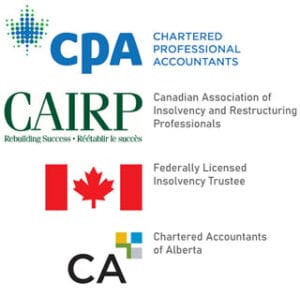A person who is a resident of Canada can file a Consumer Proposal only if his/her debts, excluding any mortgages/loans on their principal residence do not exceed $250,000, and any debts owing to Canada Revenue Agency do not exceed $200,000 or represent more than 80% of that limit.
In order to determine whether you qualify for a Consumer Proposal , we suggest you make a list of all the debts you have, including lines of credit, car loans, leases, income tax, personal loans, credit cards, etc., etc. Once you have finished your list, circle any mortgages/loans you have on your home, exclude the circled items, and add up all other numbers. If you have mortgages on recreational or rental properties, these amounts can not be excluded from your consumer proposal limit , and must be added to the total. The only mortgages that can be excluded from the $250,000 consumer proposal limit, are those registered against the home you actually live in. If your total, after deducting mortgages/loans on your residence, exceeds $250,000, you do not qualify for a Consumer Proposal.
WHAT CAN I DO IF MY DEBTS EXCEED $250,000?
If your debts exceed the $250,000 limit , the next option is a Division I Proposal, which differs from a Consumer Proposal in two main ways:
- 1. If you miss a payment in a Division I Proposal, you have 30 days to rectify the default, or 60 days from your last payment, whereas in a Consumer Proposal, you can miss up to three cumulative payments before it defaults;
- 2. If your creditors vote against a Division I proposal, you are automatically bankrupt;
Practically speaking, it is our experience that the $250,000 Consumer Proposal threshold is becoming less relevant from a creditor perspective. If you have significant income or significant assets that you would like to keep, it is our experience that many of the creditors expect debtors to file a Division I Proposal and will not accept a Consumer Proposal, or automatically vote it down. A Consumer Proposal is becoming less viable when incomes and assets are significant.
We expect that this trend will continue as creditors believe Division I Proposals are more representative of a proper level of commitment from a debtor whereas Consumer Proposals are less so.
WHAT IS BEST FOR ME?
Although the rules surrounding Consumer Proposals are relatively easy to understand, every situation involves a different set of circumstances and presents a unique set of facts. It is important to meet with a Licensed Insolvency Trustee near you, to discuss the advantages of a consumer proposal and have your situation reviewed. Our Trustees have considerable experience and insight into how creditors view consumer proposals and what does and does not work, so please don’t hesitate to contact us.



